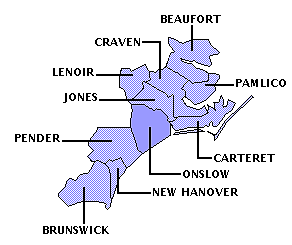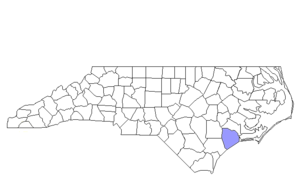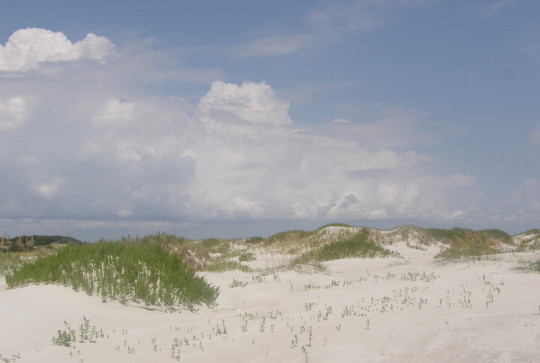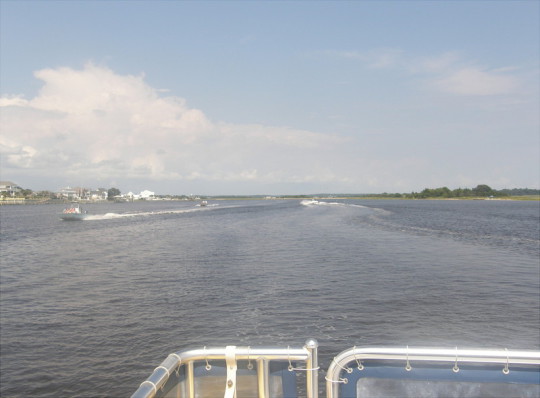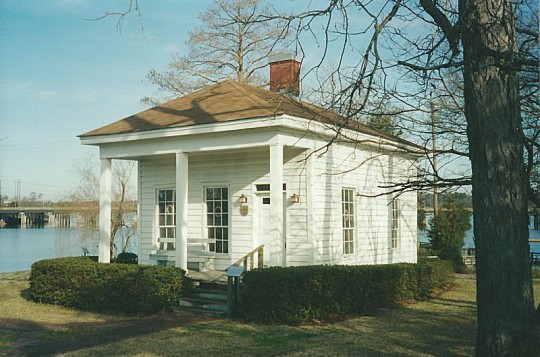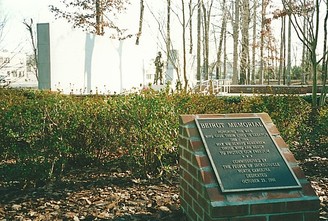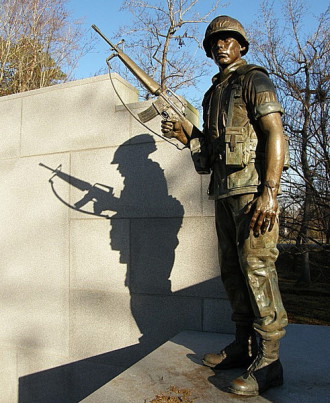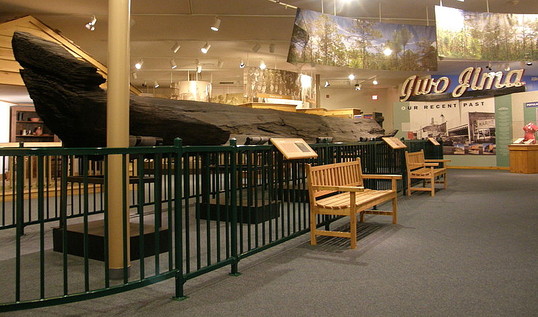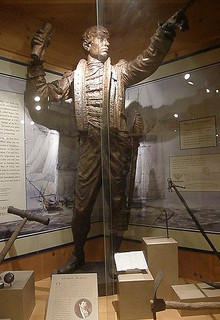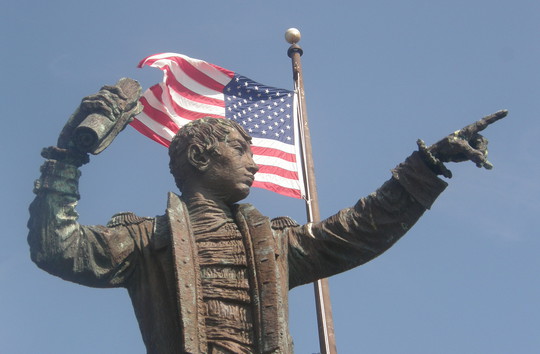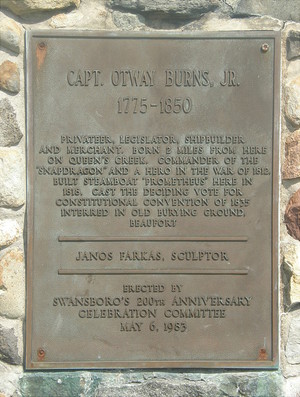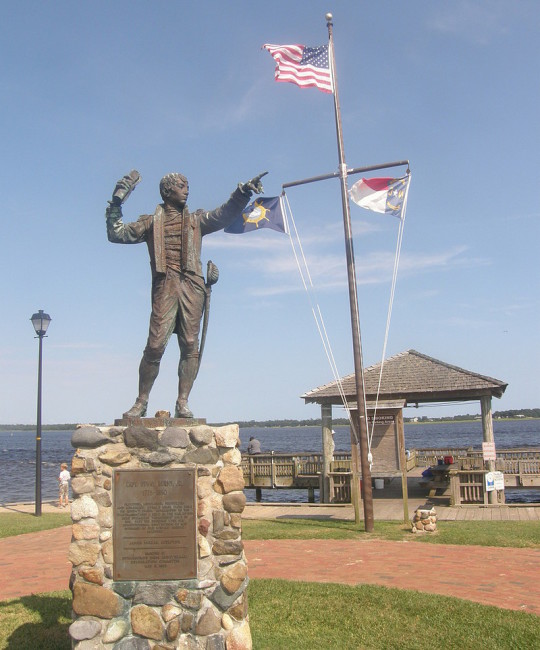ONSLOW COUNTY
Scroll down this page or click on specific site name to view features on the following Onslow County attractions/points of interest:
Hammocks Beach State Park, Jacksonville, Onslow County Museum, Swansboro
Fast facts about Onslow County:
Created in 1734, the county is named for Arthur Onslow, Speaker of the British House of Commons.
The county seat is Jacksonville, named in honor of US President Andrew Jackson. Other communities include Holly Ridge, Hubert, North Topsail Beach, Richlands, Sneads Ferry, and Swansboro.
Onslow County’s land area is 766.82 square miles; the population in the 2010 census was 177,772.
It is worth noting that a large part of Camp Lejeune Marine Base is located in Onslow County.
Southwest of Swansboro
Don’t let the names Hammocks Beach State Park and Bear Island fool you. You’ll find neither hammocks nor bears at this secluded state park about ten miles east of Jacksonville. What you will find is one of the most unspoiled beaches on the Atlantic coast. In addition to swimming, sunbathing, and strolling along the 3-½ mile beach, you can also learn about the importance of barrier islands to the environment, something about sea turtles, and maybe even a little bit of Civil War history on the side. When first opened in 1961, Hammocks Beach State Park was limited to blacks only. The park was desegregated in 1964 with the implementation of the Civil Rights Act. The site includes Bear Island (an 892-acre barrier island), Huggins Island (acquired in 1999), and a 3-acre mainland access area.
A modern and spacious visitor center makes a positive first impression. The facility includes an interpretive exhibit hall featuring informative displays on the importance of barrier islands and their accompanying salt marshes to the environment. Such marshy estuaries, where fresh and salt water meet, provide the habitat for two-thirds of our nation’s commercial fish and shellfish, and they are home to more species of birds than any other habitat on earth. The visitor center also provides information about sea turtles, including loggerheads, so named because their large brown heads resemble logs floating in the water. Loggerheads are the most common sea turtles off the North Carolina coast.
The focal point of the park is Bear Island, accessible only by passenger ferry or private boat. The ferry ride covers 2-½ miles and takes about 25 minutes one way. Once on the island, visitors can enjoy a day in the sun or a night under the stars. Ten campsites are available for those who might enjoy a summer night on the beach. On a clear night, away from city lights, campers will see countless stars from this vantage point. Animal life includes deer, raccoons, rabbits, and foxes. Herons, egrets, and other shorebirds abound, and bottle-nosed dolphins can sometimes be spotted offshore. From mid-May through late August, female loggerheads will come ashore at night to lay their eggs in nests dug 10 to 20 inches deep, just above the high tide line.
Visitors to the park can also learn a little bit about Confederate efforts to defend the coastline during the early months of the Civil War. In 1861, earthen fortifications were dug with slave labor at the southwestern tip of Huggins Island. Armed with six 32-pound cannons from nearby Fort Macon, this battery was intended to protect the main channel between Bogue Inlet and the White Oak River. The position was abandoned without a fight, however, soon after Federal forces under General Ambrose Burnside captured Roanoke Island in February, 1862. Today, the remains on Huggins Island are the only unspoiled Confederate earthen fortifications still surviving on the N. C. coast. Visitors choosing to do so can follow the kayak and canoe trail around the island. Park hours are 8-7 June through August and 8-6 September through May. The ferry to Bear Island runs daily Memorial Day through Labor Day; in May and September, it operates Wednesday-Sunday, and in April and October, it runs Friday, Saturday, and Sunday only. Visitors may journey to Bear Island year-round by private boat. A fee is charged for the ferry and for overnight camping. 910-326-4881
Home of Camp Lejeune
Jacksonville may never top anyone’s list of “destination cities,” but visitors to this Onslow County town don’t have to look very hard to discover several points of interest. Although Jacksonville is nowhere to be found on North Carolina maps even as late as the mid-19th century, its history actually dates back to the early 1700s. In the aftermath of the Tuscarora War, the headwaters of the New River became a center for producing naval stores. The largest naval store operation was owned by James Wantland. In 1752, hurricanes destroyed the town of Johnston, Onslow’s original county seat, and Wantland’s Ferry was chosen as the site for a new courthouse. In 1785, the town was incorporated as Onslow Courthouse, and it was not until 1884, when a new courthouse was built, that the town was renamed Jacksonville to honor former US President Andrew Jackson. Only one antebellum home, the Pelletier House, survives, standing at the corner of Old Bridge and Anne Streets. Although open to the public only on special occasions, it is nonetheless a highly visible landmark, overlooking Wantland Spring on the banks of the New River. Built circa 1850 to serve merchant Rufus Ferrand Pelletier as both home and office, it is a single-room structure with a hipped roof, built in the Greek revival style. Adjacent to the Pelletier House is the New River Waterfront Park Landing, a pleasant spot for picnics and fishing.
Prior to the attacks of September 11, 2001, one of the most devastating acts of terrorism targeting Americans took place on the morning of October 23, 1983, in Beirut, Lebanon. Stationed there on a peace keeping mission at the request of the Lebanese government, 241 marines, sailors, and soldiers were killed when a terrorist-driven truck, heavily laden with explosives, was used to blow up the First Battalion, 8th Marines Headquarters building. As many of the fallen were residents of Jacksonville, the city quickly took steps that eventually lead to the creation of the Beirut Memorial, placed at the corner of Lejeune Blvd and Montford Landing Road.
Occupying a 4.5 acre wooded site between Jacksonville and Camp Lejeune, the memorial includes a bronze statue of a solitary soldier standing in front of a wall bearing the motto “They Came in Peace” and poem entitled “The Other Wall” written by Robert A. Gannon. At a dedication ceremony held July 4, 2003, a steel beam from the World Trade Center was also placed on the grounds. The inscription reads, in part: “For the 343 Firefighters who fought a Battle in NYC on September 11, 2001. To the Marines who honored them on the Battlefields of Iraq in the Spring of 2003. Gone but not forgotten.”
Until Camp Lejeune was established in 1942, Jacksonville was just another small community on the Carolina coast. Today, thanks to the base, it is one of the state’s most populated cities. Appropriately, plans are underway to build The Museum of the Marine in Jacksonville, but it will be years before the vision becomes a reality. In the meantime, the Montford Point Marines Museum at Camp Johnson records an important event in the history of the Corps. Before Martin Luther King’s march on Washington, Greensboro’s lunch counter sit-in, Rosa Parks’ bus ride, and Jackie Robinson’s major league debut, there were the marines of Montford Point. Although African Americans had, in limited roles, previously served in the military, the blacks who trained at this facility from 1942 to 1949 truly helped to integrate the American Armed Forces. Their stories are told through photographs, documents, artifacts, and personal testimonies. The Museum is housed in the East Wing of building M101, one mile south of highway 24 East on Montford Landing Road. Hours are 11-2 and 4-7 Tuesday and Thursday, 11-4 Saturday. Admission is free. 910-347-4930
Richlands
For more than a quarter of a century, the Onslow County Museum has offered visitors a look back at four centuries of regional history. The modern building has one spacious exhibition gallery, with events and related artifacts arranged in chronological order around the walls. The first exhibit likely to attract a visitor’s attention, however, is the 38 foot Half Moon/Cottle canoe on display in the center of the hall. The canoe is believed to be about 750 years old, carved in a V-shape from a cypress tree at least 200 years old at the time it was cut. This rare artifact was found in 1968 on the Half Moon branch of the New River, on property belonging to L. A. Cottle, hence the unusual name. The Onslow County Museum literally “called in the Marines” to help move the canoe from its discovery site to the museum.
Exhibits detail the region’s early history, beginning with the native Indian cultures, then early European settlement. About 200 families lived in the area when Onslow County was established in 1731, named for Arthur Onslow, speaker of the British House of Commons. The first county seat was not established until 1742, named in honor of Royal Governor Gabriel Johnston. When a hurricane destroyed the town in 1752, a new county seat was established at Wantland’s Ferry – today’s Jacksonville. One exhibit case is devoted to Onslow County native Captain Otway Burns, a successful privateer during the War of 1812 and important state legislator. Women’s history and African-American history are also emphasized.
Exhibits also spotlight the region's involvement during the Revolutionary War, Civil War, and Reconstruction. People with only a marginal knowledge of eastern North Carolina know that Jacksonville is home to Camp Lejeune, the largest U. S. Marine amphibious training center in the country. The impact the facility had on the town can be summed up with one simple illustration. When the Marine Corps Training Center was begun on New River in the spring of 1941, Jacksonville’s population was less than 1,000. Today, Jacksonville ranks as North Carolina’s 7th largest city! Named for Lt. General John A. Lejeune, an early proponent of amphibious training, the camp covers 110,000 acres. Part of the Lejeune exhibit focuses on Camp Johnson. Named for Captain Gilbert Johnson, it is the only U. S. military installation named in honor of a black enlisted man. Over 20,000 black recruits received basic training at Camp Johnson prior to seeing active duty in World War II. Many who had trained at Camp Johnson later gained the nickname “Black Angels” for their heroic rescue efforts on Iwo Jima. The County Museum is located immediately off NC 24 in Richlands. Hours are 10-4 Tuesday through Saturday, and 1-5 Sunday. Nominal admission fee.
"The Friendly City by the Sea"
Historic Swansboro, “The Friendly City by the Sea,” is situated at the confluence of the White Oak River and the Intracoastal Waterway at the easternmost tip of Onslow County. The quaint coastal village is near several tourist destinations but has much to recommend it in its own right. The historic district is just off US 24 near the bridge crossing over White Oak River. Swansboro occupies an enviable spot on the map, with several popular tourist attractions only a short drive away. Hammocks Beach State Park is located just west of Swansboro, offering one of the most pristine beaches in the state. A few miles in the opposite direction are the beaches of Emerald Isle and the newly-expanded state aquarium at Pine Knolls. Croatan National Forest is also close by. The little village of Swansboro, however, has a charm all its own to attract visitors, and a history to go with it. The town had its origins around 1735, when the enterprising Theophilus Weeks married the widow Mrs. Green, whose late husband built the first house on the land that would eventually become the site of Swansboro. Weeks divided his plantation into town lots, and the little community began to take form. A planter and innkeeper, Weeks also served as Inspector of Exports for Bogue Inlet from 1757 to 1772. The community went through a succession of names, from Weeks’ Point to Weeks’ Wharf, and from New Town to Bogue, before the General Assembly officially created the town of Swannsborough in 1783. It was named in honor of Samuel Swann, Jr., a surveyor, lawyer, Onslow County representative, and speaker of the General Assembly for twenty years. Over time, the preferred spelling changed to Swansboro.
Without question, Swansboro’s most famous native son is Otway Burns. A privateer during the War of 1812, Burns gained national renown as the daring captain of the Snapdragon, raiding British merchant ships up and down the Atlantic coast. Following the war, Burns returned to Swansboro and built the Prometheus, the first steamship constructed in North Carolina. In 1835, Burns put principle ahead of politics, demonstrating political and moral courage by casting the deciding vote that allowed a constitutional convention to be held. This was an unpopular position among his constituents, as the ensuing changes to the state constitution greatly reduced the political power of eastern counties, including the one which Burns represented. A statue of Burns is the focal point of Swansboro’s Bicentennial Park. The small, picturesque park provides opportunities to fish, picnic, feed the gulls and ducks, or just relax and enjoy nature.
The town’s historic district includes the main shopping area along Front Street. Here visitors will find an eclectic mix of specialty shops, antique stores, and restaurants catering to all appetites. One of the more interesting buildings is the Old Brick Store. This two-story, Federal-style brick building was constructed in 1839 by wealthy merchant William Ferrand. Replacing the original wooden store which burned the previous year, its purpose was to store and export turpentine and other naval stores from the White Oak River and Bogue Sound to northern states and Europe. It is one of the last remaining commercial buildings from the antebellum period still standing in North Carolina. Although most of the residential homes in the historic area were built circa 1890-1920, one notable exception is the 1778 home of Captain Peter Ringware, a two-story white frame house built on a foundation of ballast stones. Swansboro hosts the Arts by the Sea Festival in June, the Mullet Festival in October, and the Christmas Flotilla in November. For additional information, call the Swansboro Area Chamber of Commerce at 910-326-1174.
Onslow County is bordered by CARTERET, DUPLIN (Region Five), JONES, and PENDER counties.
Return to REGION THREE HOME PAGE.
Return to GEOGRAPHIC REGIONS HOME PAGE.

